For a number of formative years in my youth, I was a Boy Scout in Troop 131, which met in Wayne, New Jersey, at Saint Michael’s Episcopal Church. Not coincidentally, St. Michael’s was also my family’s church home, and I served there as an acolyte or altar server. Our troop’s junior assistant scoutmaster, Freddy, was also the senior acolyte and Father G’s son, so in a sense he was my “captain” in both contexts, contributing to a certain blurring in my mind of the two communities.1
Key to both worlds was a sense of ritual and protocol. I came to understand that there is a right way to stand and hold a crucifix or a torch or a flag, a right way to carry these items in procession, and so forth. Freddy embodied enthusiastic discipline and precision in both contexts, and contributed to the shaping of habits in me that I have to this day.
Every weekly troop meeting, as I recall, involved a ritual presentation and posting of colors involving the individual troop patrol flags2 as well as the U.S. flag. I seem to recall a lot of time going into correctly folding the U.S. flag—I don’t know if we did it every week, but it was certainly a big thing. A lot went into how you treated the flag, beginning, of course, with never letting it touch the floor. I understood that the flag is not sacred as the Eucharist is sacred,3 but I still thought of how I treated the flag as part of doing “my duty to God and my country,” in the words of the Scout Oath.
I took the photo above, of a small U.S. flag on a garden flag stand, a few years ago while on vacation in Ocean City, New Jersey. It interested me as a problem in flag etiquette: Is this flag displayed properly or not?
Let’s start at the beginning.
When we think of the archetypal U.S. flag, we picture it displayed horizontally, with the blue field of stars in the upper left corner. Incidentally, the upper left corner of any flag4 is called the canton; the canton of the U.S. flag has a special name, the union.
This archetypal display is how I drew the flag on my Fourth of July holiday whiteboard,5 though I took some stylistic liberties:
As I drew it, the left edge of my dry-erase flag is at nearly 45 degrees, so technically my flag is almost as close to vertical as to horizontal! If we imagine the U.S. flag being displayed vertically, perhaps our first, most natural and intuitive expectation is that it should look like the iconic horizontal flag rotated 90 degrees, with the stars—the union—on the upper right:
Thus, our first, most intuitive feeling might be that the lawn flag is displayed incorrectly. Our first instinct is that the union should be, not on the left as seen below, but on the right.
As many readers will know, however, there is a complication! Whenever the U.S. flag is not hoisted on an upright flagpole, but hung in such a way as to be viewed exclusively or primarily from one side—most often when it is hung against a wall or from a building facade, but also potentially in cases like this where it is hung facing a street or sidewalk6—then, regardless whether the flag is displayed horizontally or vertically, the union should be positioned in the upper left. So, for example, the flag in the photo below is correctly displayed.7
We might therefore be inclined to view the garden flag as correctly displayed. After all, it’s aligned just like the one in the photo above!
But there is another wrinkle!
When a flag is affixed to a flagpole—as opposed to a wall or a rope, etc.—then the union always goes nearest to the peak of the staff,8 or, alternatively, furthest from the base. This applies whether the flagpole is vertical or horizontal (i.e., projecting from a building, or lamppost, etc.). So the flag in the photo below is correctly displayed (whichever direction you happen to be walking or driving):
Likewise, both of the flags below are correct!
So what about our garden flag?
It’s displayed on a garden flag stand with two bars, an upright support bar and a projecting horizontal bar from which the flag hangs. If you consider the free end of the projecting horizontal bar the peak (or hoist end), then the garden flag is incorrectly displayed. Correct, instead, would be the display below, with the union at the free end of the projecting horizontal bar.9
Yet, at least in the case of the garden flag in the original photo, there may be a still better solution! Given that this flag is meant to be seen from one side—i.e., from the sidewalk or street—it might be best to swivel the flag stand around, like so:10
This seems the best of both worlds: The union is both to the presumed viewer’s left and also at the free tip of the horizontal bar of the flag stand.11
Or so one might think! What is the official answer?
So far as I can tell, there isn’t one! At least, the U.S. Flag Code doesn’t address this exact scenario; flag stands as such are not foreseen. There seems to be room for interpretation. Well, I have made my case for the interpretation that seems best to me; as always, I am open to challenge or correction by those who may know better than I.
Bonus question!
This one is very different; there is a right answer.
From the foregoing discussion, you may not be surprised to learn that on Boy Scout uniforms the U.S. flag is worn as a patch on the right shoulder, horizontally displayed—and that the union appears in its accustomed place in the upper left corner.
The same practice is observed by at least some police forces.
However, in the military, it is different!
Members of the U.S. military (such as the Army cadet pictured here, who happens to be my daughter) wear a U.S. flag patch on the right shoulder with the union on the right, which looks wrong!
Why is this?
Here’s a hint: When the flag is worn on the left shoulder of a military uniform, the union is on the left, as expected.
You see the pattern, right? The union always faces to the front—and that, in current military practice, is the point. The flag is worn to appear to be advancing, trailing an imaginary flagpole, as if in the wind of the bearer’s forward motion. To wear the flag on the right sleeve with the union in its standard left position would suggest retreat!
So why is it different for Boy Scouts and police? According to Sheriff John Montgomery of Baxter County, Arkansas, “We wear the flag the opposite of the military. The military wears the flag so it flies back, where you’re rushing in. Law enforcement is not considered aggressive like the military, charging in. Therefore, we stop, we evaluate, we take action.” The same rationale would obviously apply to Scouts, for whom the flag is not a standard carried into battle!
On the other hand, other police forces do wear flag patches in the military style. Draw your own conclusions!
Read more entries labeled Curious >
The blurring of the church setting and the Boy Scouts in my mind was such that I was confused to learn that one of my fellow Scouts in Troop 131 was Jewish. What was a Jewish boy doing in a church? One of the adult leaders gave me to understand that this was okay, and so I grasped uncertainly that, while Christianity and Scouting overlapped, the latter was not a subset of the former, as I had unreflectively assumed. (Alas, I fear that whatever discomfort my Jewish fellow Scout may have felt being in a Christian space was not alleviated by my initial naive reaction!)
I was still many years from coming to understand the Eucharist as the literal body and blood of Jesus—but when Father G. genuflected at the consecration, solemnly intoning “My Lord and my God” while the church bell pealed, I felt deeply God’s presence and the sacredness of this symbolic act. In some way I believe this helped to prepare me to accept Christ’s Real Presence in the blessed Sacrament.
More properly, the “hoist corner,” since it’s only the left corner when you’re looking at it from one side!
If you missed it, more on my whiteboard designs…
More SDG whiteboard fun!
Earlier this week I pulled back the curtain a bit on a Grey Havens birthday tradition of special dry-erase marker whiteboard designs, highlighting the Coraline–themed whiteboard design I did for a joint birthday celebration of our eldest and youngest daughters.
When the U.S. flag is hung in the lobby of a building facing a single entrance, the perspective of those entering, not leaving, the building is privileged. If there are entrances on opposite sides, then a different rule takes over: Like a flag hanging over a street, the union faces east on a north-south street, and north on an east-west street. (They thought of almost everything!)
As a comic-book geek, and a giant fan of Frank Miller and David Mazzuchelli in particular, I can’t help noting that “Nuke,” the psychotic super-patriot war machine from the Daredevil: Born Again saga, has a flag tattoo on his face that is incorrectly aligned, with the union on the right. On the other hand, the strikingly similar image of President Trump used as his Truth Social avatar is correctly aligned.
The peak of the staff is sometimes called the “hoist end,” regardless whether the flagpole is designed for hoisting.
This perhaps raises the question: Why is the flag more consistently worn on the right sleeve of military uniforms than the left sleeve? As far as I can tell, it’s because the left sleeve is more often dominated by other patches, such as unit insignia.
There is no way you could know this from the photo, but in the case of the particular garden flag in my photo, this solution would also keep the union facing to the north, in keeping with the north/east rule!



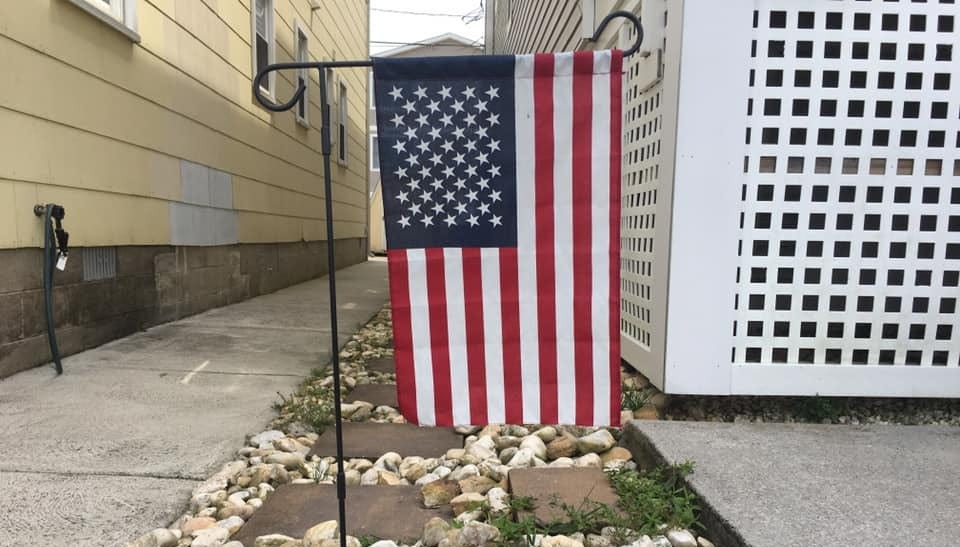





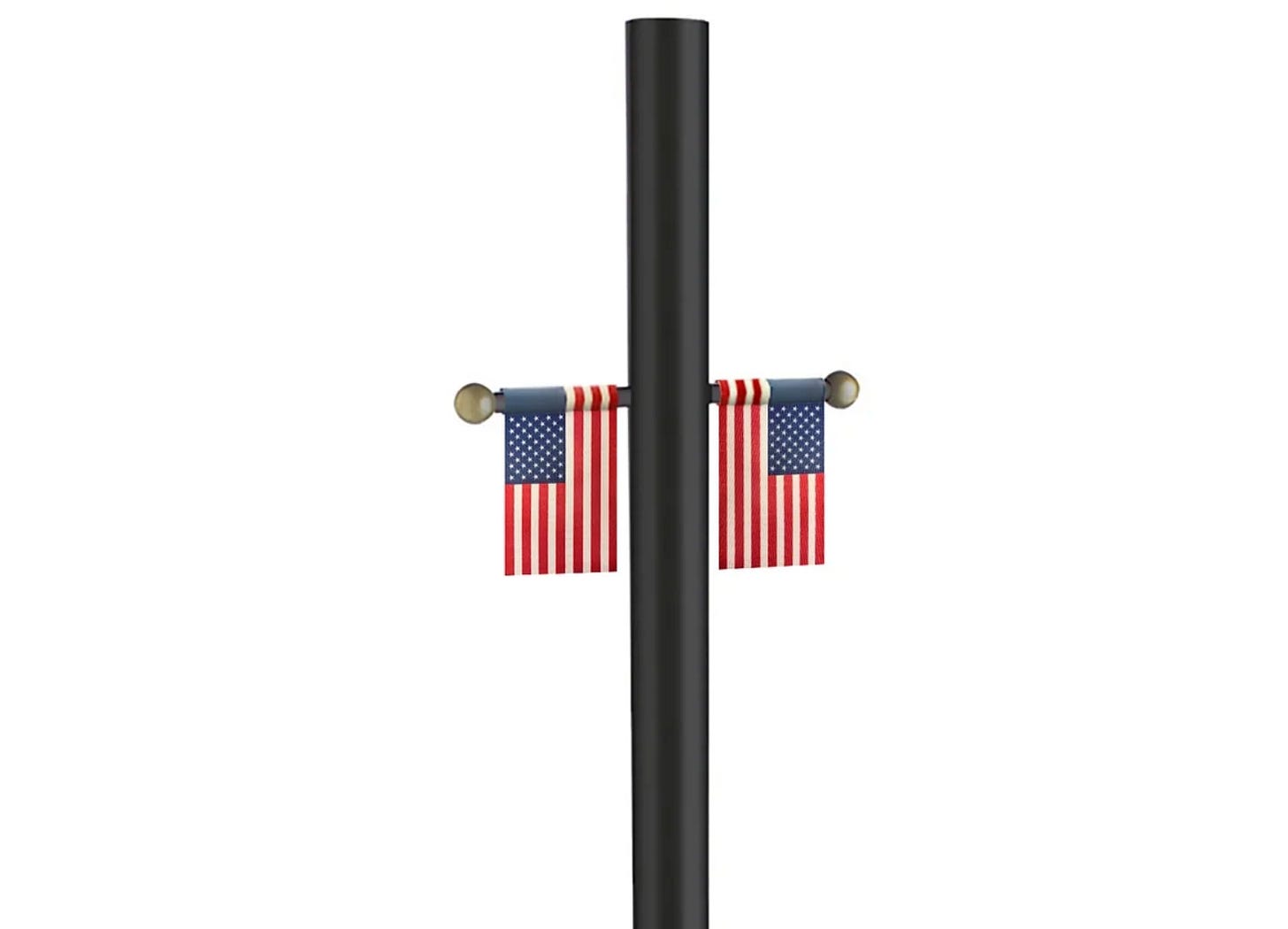
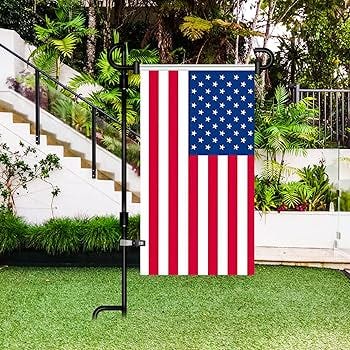
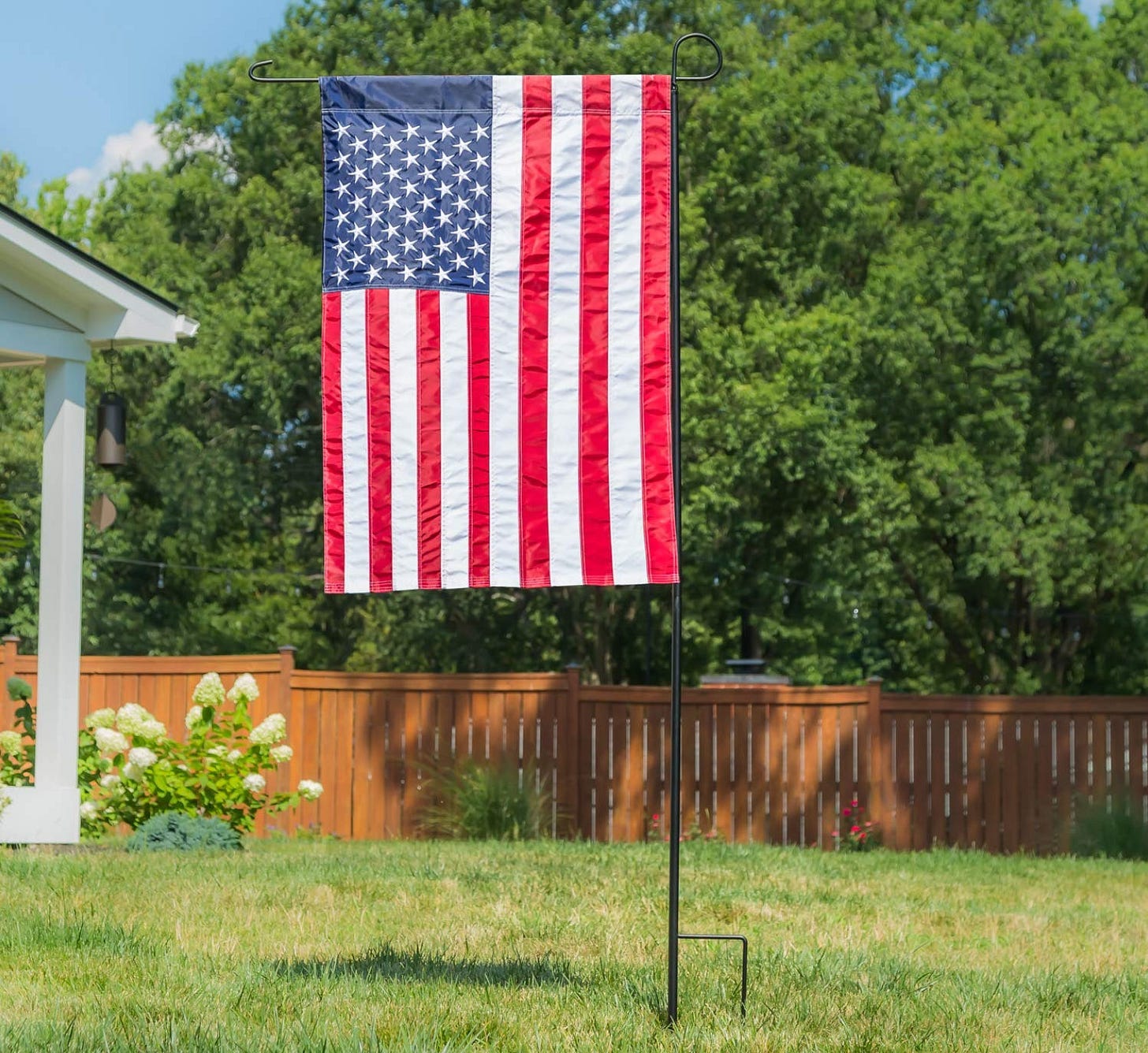


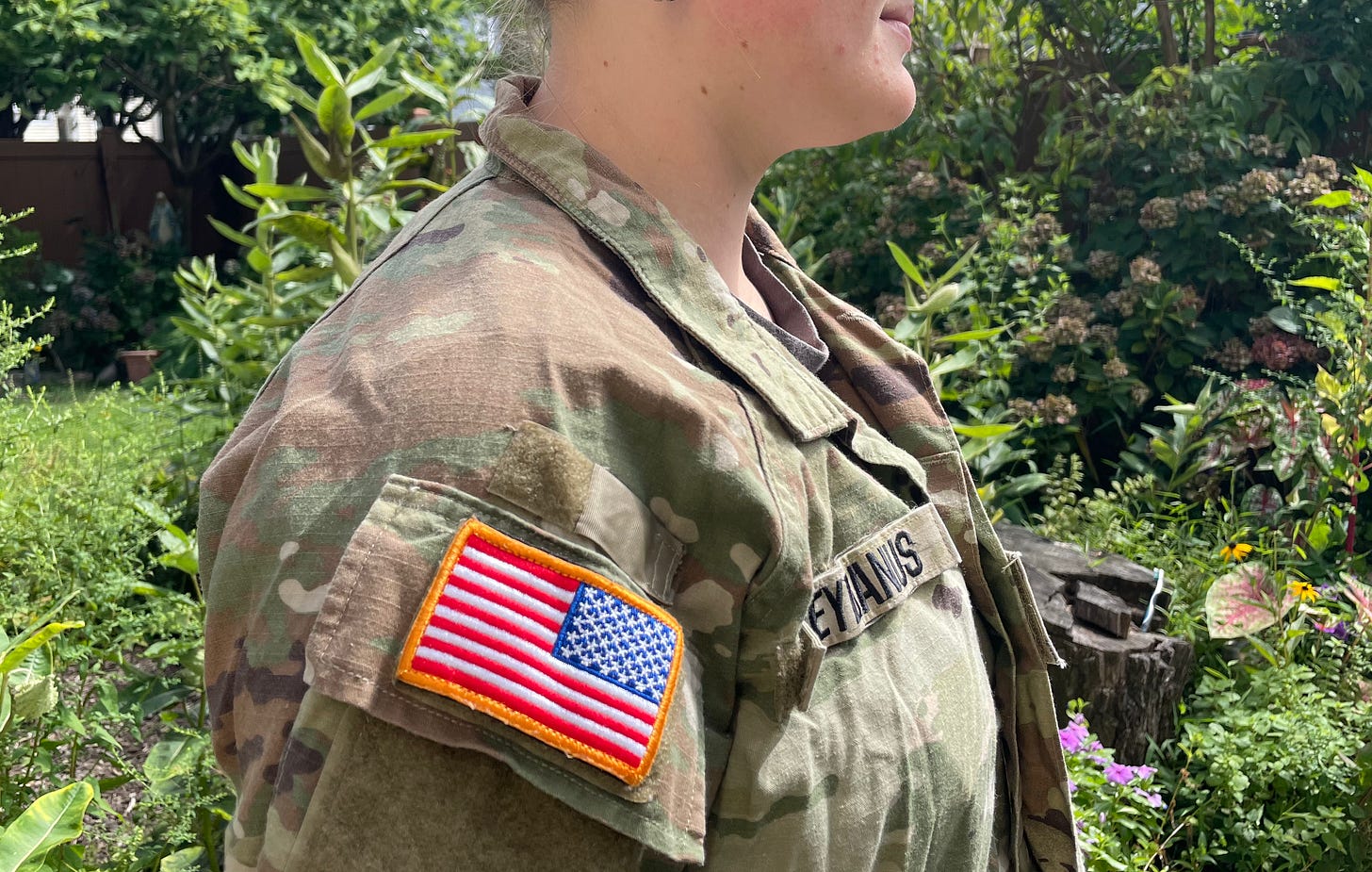


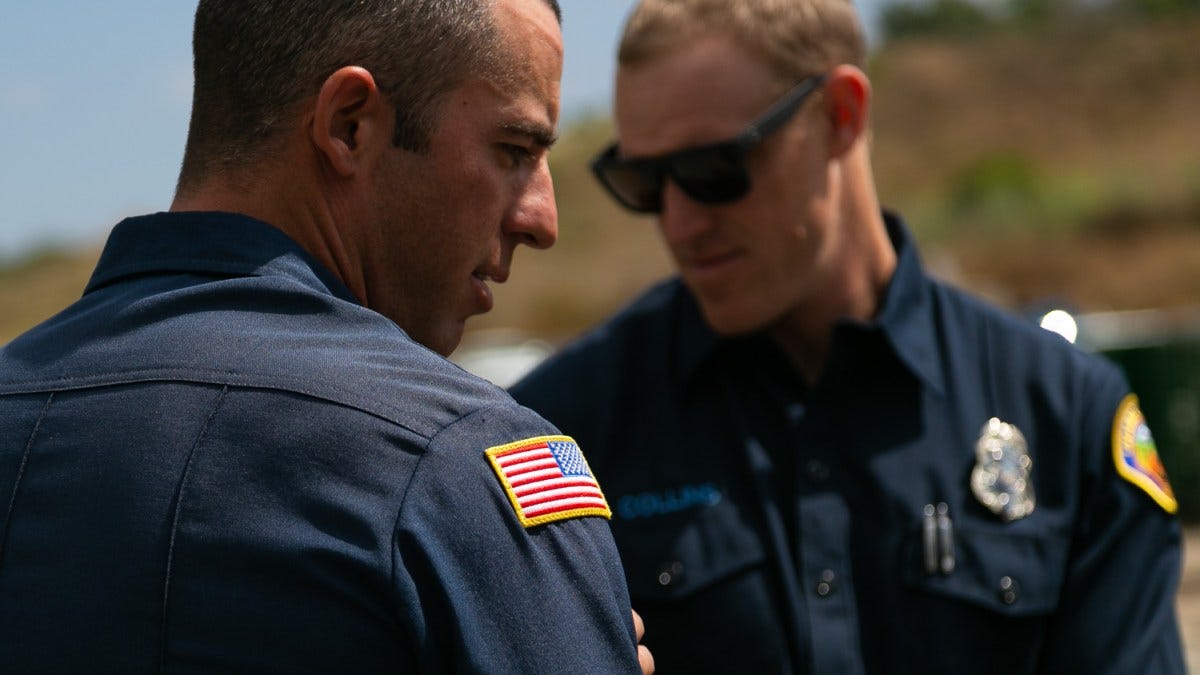



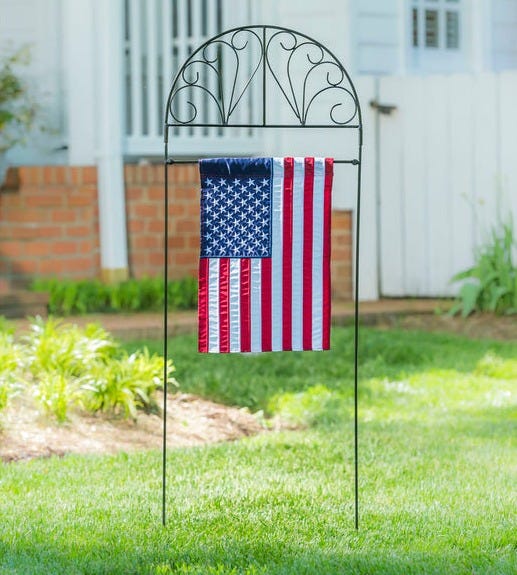
About two years ago we had instruction in flag etiquette for my Cub Scout pack, from staff at the First Division museum (Cantigny, IL). For the shoulder patch display, the instructor explained that the US military, and only the US military, has a special dispensation to wear their shoulder US flag patches that way, for reasons roughly the same as the sheriff quoted says ("charging toward an enemy army") . Although I've always found the military patch strange (and it apparently only started in 2003), I'm at least moderately comfortable with the reasoning. And, by that token, I'm quite uncomfortable with law enforcement, or anyone else, wearing their flag patches in that fashion. I really wish better flag code discipline was encouraged, especially among anyone at any level of the government.
Let me add a wrinkle to your garden flag argument. You write: "Given that this flag is meant to be seen from one side — i.e., from the sidewalk or street . . ." That assumes that the flag is facing (i.e., parallel to) the street. I don't have an American flag garden flag, but I put my flags (and, in season, political signs) perpendicular to the street, intended to be equally seen from both sides -- whether cars are coming from the east or the west. I agree that the flag in Ocean City is "wrong" in that it should have the union at the free end, not the pole end. But when you're whizzing by in a car, you can't really see those skinny poles, you just see the flag -- and inevitably, one direction of traffic will see a flag hung "correctly," with the union at the upper left, but the cars coming the other way will see it "backward."
Fortunately, my UVA flag has a simple "V" which looks the same both ways! And political signs have the same words and design correctly displaying on both sides. The best solution regarding an American flag, it seems, would be two have two flags, stitched together, so that both sides "look" right -- though that might violate some protocol/etiquette regarding stitching flags together. But given that I grew up in a day when many in my generation were stitching flags to their asses on their jeans, that might not be such a big deal!